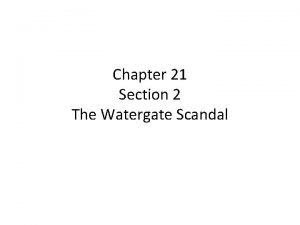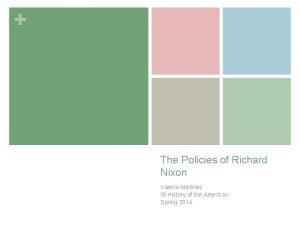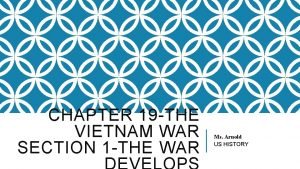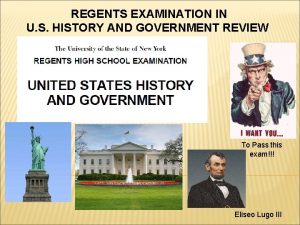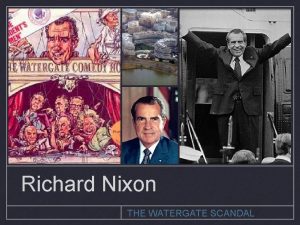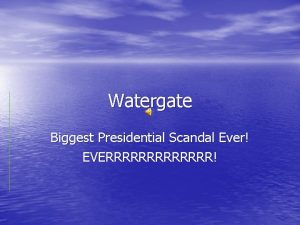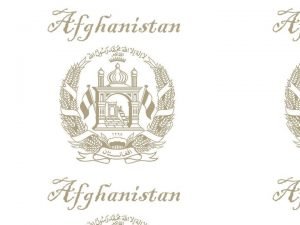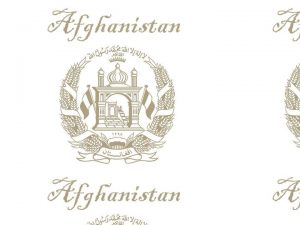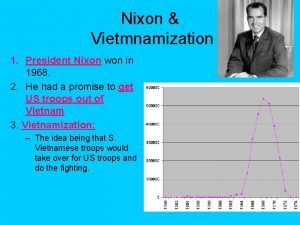The Watergate Scandal President Nixon elected in 1968







- Slides: 7

The Watergate Scandal

• President Nixon – elected in 1968 and re-elected in 1972 (Republican) • CREEP – Committee to Re-Elect the President: *Members of CREEP did things to sabotage the Democratic candidates campaign before the election of 1972 – Nixon was trying to make sure he would win the election. *5 men broke into the Watergate Office Building to spy on the Democratic National Committee Chairman’s Office – June 1, 1972

• Bob Woodward and Carl Bernstein – reporters from the Washington Post *They investigated the Watergate break-in. *”Deep Throat” was Woodward’s informant who helped him uncover the scandal; His identity was kept secret until two years ago – Mark Felt – Assistant Director of the FBI *They found out that President Nixon knew about CREEP’s activities, assisted with the cover-up, and used his president powers to try and stop the investigation. • A Senate committee began investigating the White House’s involvement in the break-in and cover-up.

• The Oval Office had a recording system and all of the President’s conversations were on tape. • President Nixon refused to turn over the recordings to the Senate committee, but the Supreme Court of the U. S. said he had to. • The U. S. House of Representatives began the process to impeach (bring charges against) President Nixon. • Nixon knew he would be impeached and the Senate would find him guilty, so he resigned from office. (the only President ever to do so) • Vice President Gerald Ford became President and later pardoned Nixon for any crimes he may have committed.

Role of President Reagan a) Challenged moral legitimacy of the Soviet Union; for example, speech at Berlin Wall (“Mr. Gorbachev, tear down this wall”) b) Increased U. S. military and economic pressure on the Soviet Union c) He helped end the Cold War. d) He proposed “Reaganomics” economic policy. (Cutting taxes and Reducing government spending)

President Reagan and Conservative Republicans advocated for: a) Tax cuts b) Transfer of responsibilities to state governments c) Appointment of judges/justices who exercised “judicial restraint” d) Reduction in the number and scope of government programs and regulations e) Strengthening of the American military

The “Reagan Revolution” extended beyond his tenure in office with: a) The election of vice president, George H. W. Bush b) The election of centrist Democrat, William “Bill” Clinton c) The Republican sweep of congressional elections and statehouses in the 1990 s. d) The election of George W. Bush as president.
